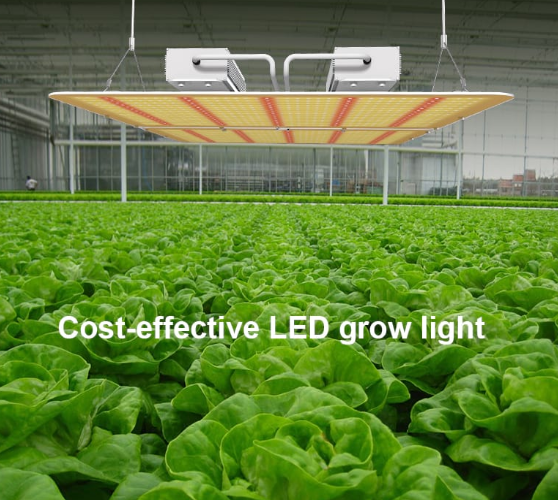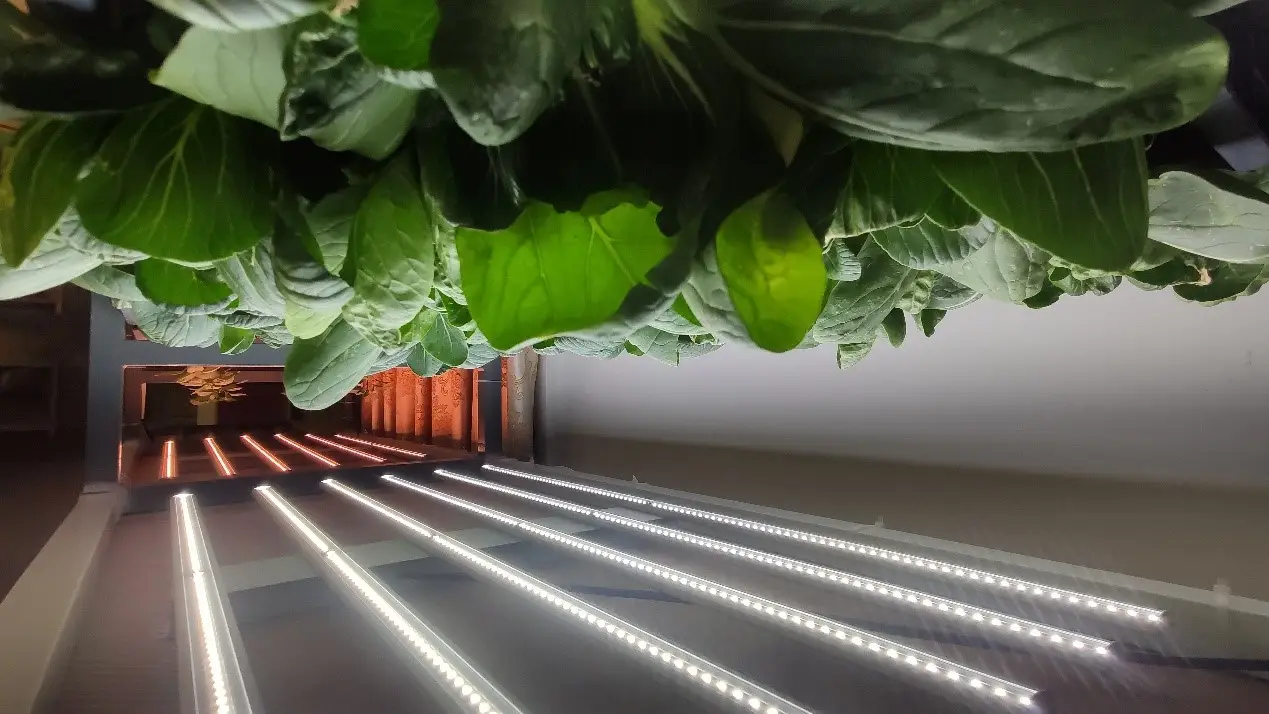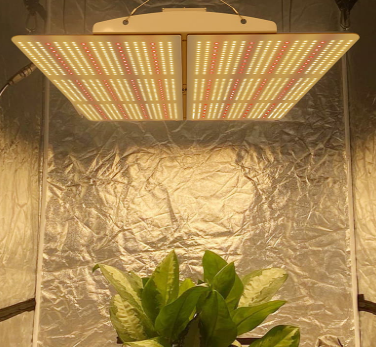Light is one of the basic elements of plant health and growth. But in indoor environments, especially near the Arctic, indoor plants often encounter problems that nature has not encountered: insufficient light. Despite favorable windows, most plants still don't have enough light. No plants in our home will be exposed to too much light! This is why if we want indoor plants to thrive, artificial lighting is usually needed, that is, LED plant lights!

Plant fill light to grow vegetables
The light source of LED plant light is mainly composed of red and blue light sources, which have a great impact on plants: blue light wavelengths 450-460nm and 460-470nm, red light wavelengths 620-630nm and 640-660nm. Red light can promote the metabolism of stems, and greatly promote the flowering and fruiting of plants. Blue light mainly prevents plants from growing, promotes the formation of plant dry matter, and has a significant effect on the growth of rhizomes.
In general, the chlorophyll of plants can directly absorb the red light with a wavelength of 640~660nm and the blue light with a wavelength of 430~450nm. There are also lutein, carotene, carotenoids, anthocyanins and other components that can absorb photosynthesis in the plant. , After using the LED plant light, it can meet the light required for indoor planting at any time.
As supplementary lighting, LED plant lights can enhance the lighting at any time of the day, which can extend the effective lighting time. Whether at dusk or at night, it can effectively extend and scientifically control the light required by plants. In greenhouses and plant laboratories, it can completely replace natural light and promote the growth of plants. It completely solves the situation of watching the sky and eating in the seedling stage, and arranges the time according to the delivery date of the seedlings.

Growing vegetables indoors
1. Three advantages of indoor planting of LED plant lights:
1. Realize an intensive plant production with high efficiency, low heat load and compact development space, so that the growth cycle of the plant is reduced while the output increases.
2. Prevent pests and repellents. The wavelength of LED plant lights is only suitable for the growth of plants. People or other animals and pests will not be uncomfortable when exposed to this wavelength for a long time, so pests dare not come close. The light can also protect the healthy growth of plants.
3. The LED plant light can be used in any place that needs supplementary light, such as indoor planting, without restriction, and due to the appearance design and installation method of the LED plant light, the use of space and the uniformity of light can be maximized.

2. The following points should be paid attention to when LED plant light fills up light indoors:
Installation height
The installation of LED plant lights must be scientific in order to effectively improve the light utilization rate of plant lights. In order to ensure the plant's supplementary light intensity, the plant's supplementary light should be placed as close as possible to the plant, and its distance should be set according to the power of the plant's light. Generally, the closer the distance between the plant lamp and the plant, the higher the light utilization rate. Use LED plant lights to fill up the light. Since the LED has very little heat energy, it will not burn the plants and can be irradiated at close distances, the shortest distance can be 10 cm. Generally, for plant lights with power less than 8W, the irradiation distance is about 0.5 meters, and for plant lights with power greater than 8W, the irradiation distance can be between 0.7-1 meters.
Fill light time
Depending on the growth period and growth environment of plants, the time it takes to supplement light is different. Indoors where the light is not strong but can shine into the astigmatism of the sun, the fill-in time should be no less than 5 hours; for balconies with less than 4 hours of light (only those with light in the morning or afternoon for half a day), the fill-in time should be no less than 4 hours ; Shady areas and indoors without sunlight should be filled with light for no less than 10 hours. Generally, the time for supplementing light during the growth period of plants is longer, and the dormancy period is shorter. No less than 10 hours of supplementary light should be provided on cloudy, rainy and foggy days. Another thing to note is that since plants mostly photosynthesize during the day and grow at night, there is generally no need to supplement light at night.
Improve light utilization
Wall latex paint: If you choose to use latex paint, first of all the wall area should be very smooth. Otherwise, the reflectivity will be significantly reduced. The latex paint chooses pure white instead of bright white, and the surface must be painted correctly. Latex paint is a good and cheap solution. Its reflectivity is over 85%, which makes it an efficient choice.
Plastic film: Plastic film is a polymer with black on one side and white on the other. They can reflect nearly 95% of the illuminating light, but be aware that plastic films will generate a lot of heat. Use HVAC systems to remove the heat.
Evenly distributed installation
Measure the floor area. Multiply the length by the width to get the area of the planting area in square meters. You can make the right choice based on how much power to provide per square meter, that is, how many LED plant lights are installed per square meter. In this way, each lamp can be evenly distributed, so that the outer edge will receive strong light, so that the light will be more uniform, and the growth of plants will be more effective.
Humidity and temperature
Photosynthesis and transpiration rate are directly affected by temperature, humidity and airflow. Find the best temperature and humidity for your plants between 75*-85*F and 50%-70% humidity, and have sufficient airflow to replenish carbon dioxide.
The PG02 LED Grow Light series is designed for the largest and densest vertical farms in the world, which can illuminate your crops from breeding to harvesting. This low-key lighting system can provide a broad spectrum of white light at each growth stage of the plant, enabling the cultivator to produce high-quality crops while saving energy.
Now that the technology of LED plant lights is becoming more and more perfect, its powerful practical functions and advantages have been widely used and loved in indoor planting. The development trend of LED plant lights in the field of indoor planting will be unstoppable.
Author 2025-06-12
Hishine Group Limited Will Meet Customers In Mexico City.Hishine is thrilled to announce its participation in Expo Eléctrica International 2025, Latin America’s premier trade fair for power and lighti...
Author 2025-05-12
Our recent business trip to Saudi Arabia proved to be a pivotal step in strengthening partnerships and exploring opportunities in the Kingdom’s rapidly growing energy and lighting markets. Below are t...